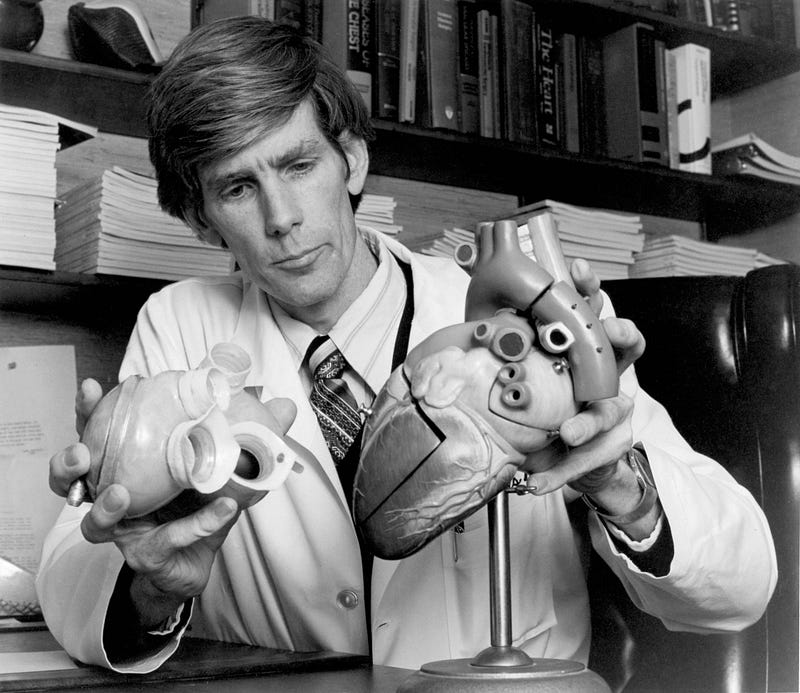The Remarkable Evolution of Artificial Heart Technology
Written on
Chapter 1: The Genesis of Artificial Hearts
For decades, medical researchers have tirelessly pursued solutions for heart disease. The inception of the first artificial heart implant marked a pivotal milestone in this journey. This groundbreaking achievement not only transformed cardiac care but also instilled hope for countless individuals grappling with severe heart ailments.
In the early 1900s, the notion of creating an artificial heart began to take shape, yet significant advancements didn't emerge until the 1950s. Trailblazers like Dr. Paul Winchell and Dr. Michael DeBakey experimented with various prototypes and concepts, probing the possibilities of machines replicating the heart's essential functions. Their pioneering efforts set the stage for future innovations in artificial heart research.
Section 1.1: The Breakthrough Moment
The quest for the inaugural artificial heart implant reached a critical juncture in 1982 with Dr. Robert Jarvik's design of a groundbreaking device known as the Jarvik-7. Dr. Barney Clark, a retired dentist from Des Moines, Washington, had been battling end-stage heart failure, facing a grim prognosis with only a few months to live. In light of his dire circumstances, Dr. Clark bravely volunteered to be the first individual to receive the Jarvik-7, understanding that his choice might open doors for future heart patients.
On December 2, 1982, history was made at the University of Utah Medical Center in Salt Lake City, where Dr. William DeVries led a skilled team of surgeons and medical staff in a marathon seven-hour surgery to replace Dr. Clark's failing heart with the Jarvik-7.

The Jarvik-7 was a marvel of engineering, crafted from polyurethane and driven by an external pneumatic pump to deliver vital blood flow. Although it was designed as a temporary measure pending a human heart donor, the operation itself was a testament to human ingenuity.
Subsection 1.1.1: Challenges on the Path
The journey to success was fraught with difficulties. Early models of the artificial heart encountered issues like blood clot formation, infections, and device failures. Following the surgery, Dr. Clark faced numerous complications, yet the procedure was deemed a success as he lived for an additional 112 days.
Subsequent patients experienced mixed outcomes with the Jarvik-7. For instance, William J. Schroeder lived an extraordinary 620 days with the device, although his quality of life was severely impacted by strokes shortly after the surgery. Conversely, Leif Stenberg showed remarkable improvement, surviving for 229 days before succumbing to a fatal stroke.
Section 1.2: A Legacy of Innovation
While Dr. Barney Clark did not survive thanks to the Jarvik-7, his bravery and the commitment of the medical community ignited a revolution in cardiac medicine. This landmark surgery laid the groundwork for future advancements in artificial heart technology, resulting in more refined devices and enhanced patient outcomes.
Chapter 2: The Future of Artificial Hearts
As the years progressed, artificial hearts underwent significant enhancements, incorporating better materials, compact designs, and more advanced power sources. These innovations ultimately led to the creation of ventricular assist devices (VADs), which support failing hearts while patients await transplants.
Today, artificial heart implants and VADs are vital therapeutic options for individuals with end-stage heart failure, serving as either a bridge to transplant or a destination therapy for those who are ineligible for transplantation. The foundational work on artificial hearts ushered in a new era in cardiac medicine, revolutionizing patient care and offering hope to millions worldwide.
The first video, "Groundbreaking: First-in-human total artificial heart implanted inside patient in Houston," showcases this incredible medical milestone, highlighting the pioneering spirit that has driven advancements in heart technology.
The second video, "The Texas Heart Institute Implants BiVACOR® Total Artificial Heart," delves deeper into the evolution and implementation of artificial heart technologies, underscoring the ongoing quest to improve and refine these life-saving devices.
It is awe-inspiring to witness how technology can save lives and bring hope to those facing severe health challenges. Despite the hurdles encountered along the way, the relentless determination of the medical community to enhance and perfect artificial heart technology is truly remarkable.